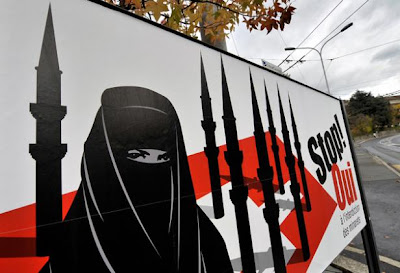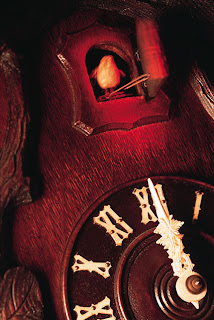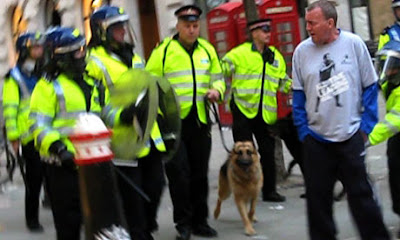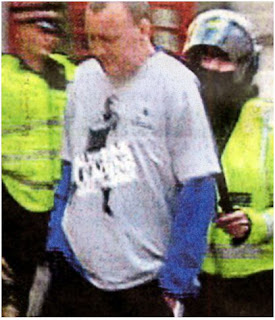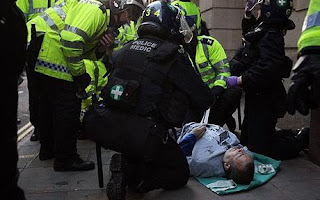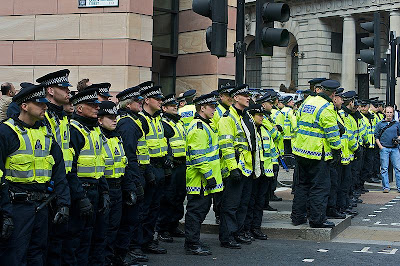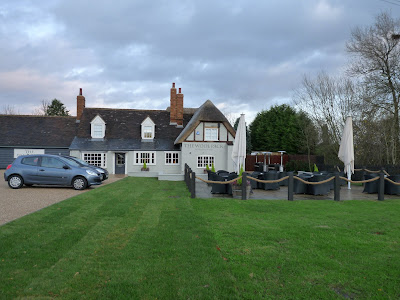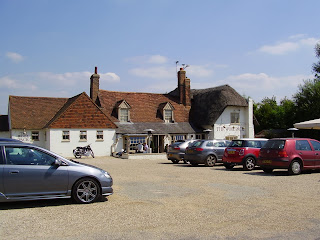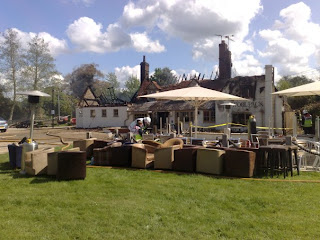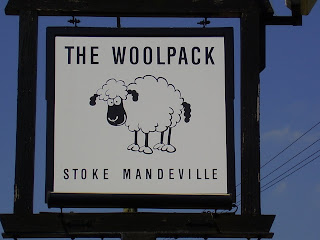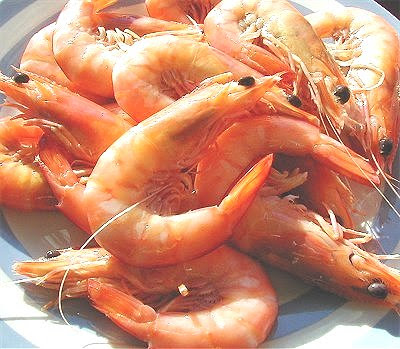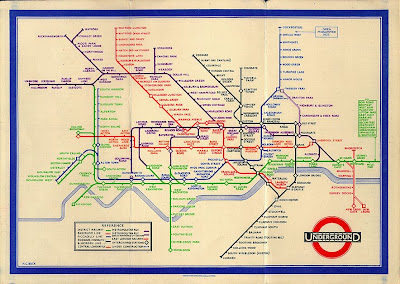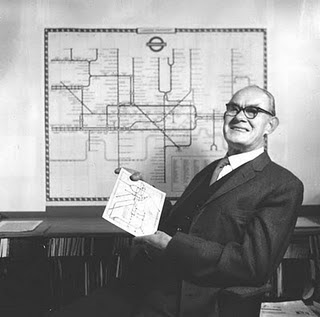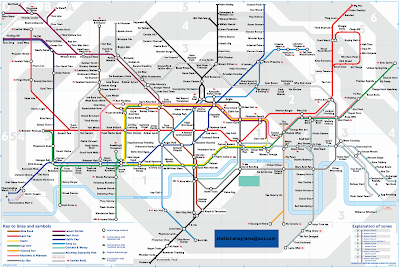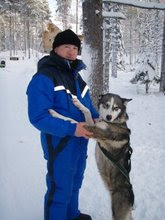 Conor in Finland for his 50th Birthday
Conor in Finland for his 50th BirthdaySome journeys are the hardest to make and some words are the hardest to write. This time last year on the plane from London to Dublin my head was in a swirl as I tried to take in that Conor my friend of over 35 years was gone. His death, just after his 52nd birthday, was unexpected. Compared to the rest of us most of the time Conor was whippet like and was physically active enjoying the outdoors and bringing his big and boisterous Alaskan Malamutes for a walk or a run most nights. He had told me a couple of years earlier a health screen had picked up on his blood pressure but he was on tablets for it and watching his cholesterol so I thought no more of it. His work responsibilities in the computer industry were heavy and when our paths crossed I was sometimes astonished at the travelling he did but Conor had done much in his career and was riding the Celtic Tiger.
His active lifestyle probably masked that he was suffering from congestive heart disease as his heart rate and so on seemed strong and healthy. He died unexpectedly in his wife’s arms early on the morning of the 27th November in the Mater Private Hospital Dublin. It was a great shock as he was due to be discharged that day and had responded well to his treatment and the stents which had been inserted to clear blockages. But it seems he had had probably four heart attacks in the previous days and though everything had been done he was just very unlucky.
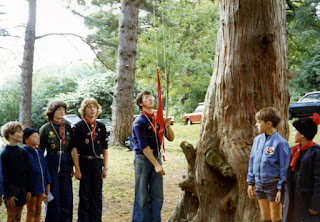 Raising the flag, Powerscourt, Co. Wicklow 1977.
Raising the flag, Powerscourt, Co. Wicklow 1977.The large crowd which attended his removal and funeral in Dublin spoke of the diversity of his interests and of those he had touched; there were of course family and friends, members of 5th Port Sea Scouts and others from the Scout Movement, from traditional music circles, from the Poolbeg Yacht Club where he had been Mooring Officer, from dog breeding circles, Neighbours, colleagues from the Irish and International Computer Industry and many more. And then, first and foremost, his wife Frances, his daughter Roisín and son Shane. What we all had in common is none of us wanted to be there for our friend Conor had been taken too early when he still had much to give and much he had planned to do.
 Conor at the Woodstock Jamboree 1978
Conor at the Woodstock Jamboree 1978Conor grew up in Finglas West in a family where his father was a Fianna Fail activist who gave him a keen awareness of the Maguire family roots in Co. Fermanagh. He never forgot he was named after the Irish Patriot, Conor Maguire, 2nd Baron of Enniskillen. The Earl of Enniskillen took part in the rebellion against English rule and the attempt to take Dublin Castle in 1641, was arrested and sent to the Tower of London. He was tried, convicted and hanged, drawn and quartered. The seat of the Maguire’s was the still extant Enniskillen Castle and Conor always felt a visceral sense of grievance when he saw the flag of St. George flying over the castle.
Conor wouldn’t thank me for saying so but over the years Finglas West did much to earn its epithet in Dublin of “The Wild West.”
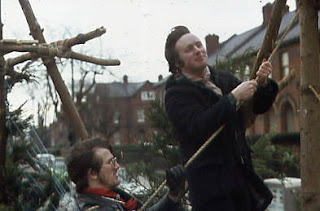 Conor & me, St. Patrick's Day Parade, Dublin, 1978
Conor & me, St. Patrick's Day Parade, Dublin, 1978Conor impressed at school but did not excel being interested in nature and crafts but even then as the Celebrant at his funeral who had been his teacher observed he stood out from the crowd, avoiding fads and peer pressure and wearing a hat when that wasn’t fashionable. Indeed this became his trademark over the years gaining him the nickname of “Conor the Hat.” The more practical reason is the male genes in the Maguire family dictated that they were follically challenged! The big influence when he was younger was a remarkable character called Dick Vekins who was the Scout Leader or “Skipper” of 5th Port Sea Scouts in Dollymount. Always demanding the best from each scout he instilled values of doing their best and achieving their potential. He strongly believed that scouting had something for everyone and this is reflected in the events that he organised from the most physically gruelling boat or canoe race to a poetry competition. Dick was an accomplished metal worker and craftsman who ran his own business and was an accomplished mandolin player.
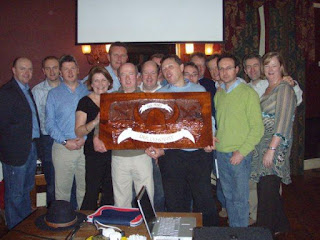 Conor presenting the shield to 5th Port Sea Scouts, Crow's Nest, Dollymount.
Conor presenting the shield to 5th Port Sea Scouts, Crow's Nest, Dollymount.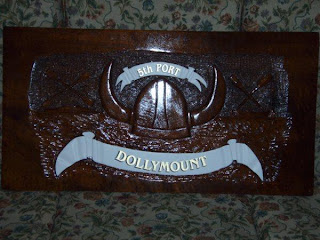 5th Port Shield carved by Conor
5th Port Shield carved by Conor Shipwrecked as a Marine during WW11 and left virtually crippled he restored his mobility by exercise and willpower and took up wrestling representing Ireland in international competition and becoming president of the Irish Amateur Wrestling Federation. His association with 5th Port left Conor with a lifelong love of the sea and the outdoors, craft, music and poetry and enduring friendships. He also learned from Dick that setting high standards for yourself and influencing others by example is more effective than any other way.
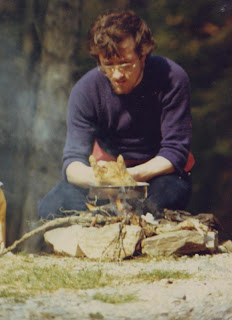
Leaving school Conor started off as an unhappy apprentice plaster. Soon, not seeing a future in such hard, dusty and damp work he got a job as a warehouseman at a local pharmaceutical distributor and then as stores controller at a bustling clothing manufacturers, Jack Toohey in Marrowbone Lane in the Liberties of Dublin. After a number of years looking for a challenge he became logistics manager for Rexel Ireland, an office supplies firm. The computer manufacturer Hewlett Packard was setting up a major manufacturing plant in Ireland and Conor joined them in logistics. Soon he was flying in from Chicago with whole production lines and developed his reputation in the computer world whilst gaining membership of the Chartered Institute of Logistics and becoming expert on customs law. In 1999 he was headhunted by Novell systems as their International Trade Services Manager EMEA and in 2005 was headhunted again by Microsoft. In September 2008 he was once again headhunted by Symantec. By any standards this was a remarkable career trajectory largely built on his drive, personal reputation and being trusted in a hugely pressurised industry, but there was another element. Once, when we were talking, I worked out some probabilities he was discussing and gave him the answers. He turned around and said “God, I hate you!” I was a bit shocked but then he explained something I had never realised, that he was severely dyslexic and resented that I could always work out maths in my head but he couldn’t. When people threw numbers at him he had to write them down, go away somewhere quiet and work them out on paper. Knowing this you had to admire his career achievements all the more.
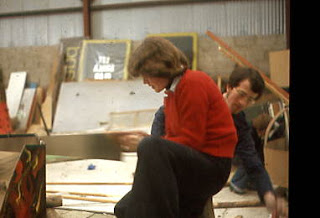 Conor & Frances working on the St. Patrick's Day float 1978
Conor & Frances working on the St. Patrick's Day float 1978We have a saying in the Gaelic which is not really translatable into English “Tá mo chleamhnas déanta” but “my match is made” or more idiosyncratically “This is THE one” might do. When Conor and Frances O’Callaghan met this was the tune which he was humming and they formed a strong partnership with Frances’s practicality balancing Conor’s idealism. We all knew each other well from nearby neighbourhoods, scouting and mutual friends, I used to see Frances’s best friend. Their relationship endured such trials as going on a canoe trip from Dublin to the river Boyne when Frances was six month’s pregnant. In October 1979 I got the call that Frances needed an urgent lift into the Rotunda and around 1.30 in the morning after spending an incredibly boring 7 hours in the waiting room Conor emerged and uttered the immortal words “Dave – it’s a girl and I’m still happy!” Well they were both really happy and when 8 years later after the sadness of a miscarriage their daughter Roisín was joined by their son Shane their happiness was complete.
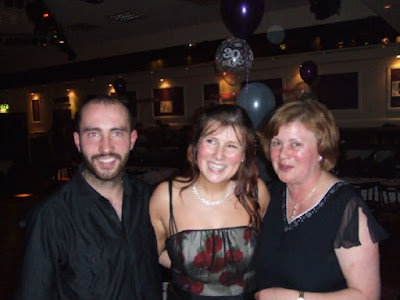 Shane, Roisín and Frances at Roisín's 30th Birthday Party, October 2009
Shane, Roisín and Frances at Roisín's 30th Birthday Party, October 2009 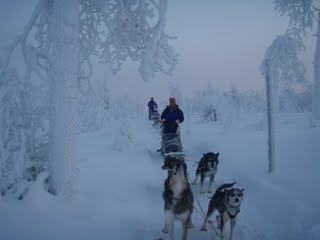
Conor wrote a poem for Roisín, the first time the garden pond froze and they were able to put her standing on the ice and she was mesmerised to walk on the water and look down - it is called
"The Cotoneaster Berries" after the bush which formed the back drop to the scene.
 For Roisín, now almost grown.The cotoneaster berries are scarlet now
For Roisín, now almost grown.The cotoneaster berries are scarlet now
Set against the waxen green gloss leaves
Stark contrast to the naked apple bough
And deserted swallow’s nest beneath the eaves.
The ice set thick upon the goldfish pond
Last night with winter’s first full frost
And trapped inside a fern-like frond
A tender keepsake of a summer lost.
The Rowan stands guard above the scene
Aloof and proud though stripped of autumn’s glory
A sad reminder of the things that may have been
As we turn another page on this year’s story.
The sweet innocence of children’s play
Like the scattered leaves lies strewn upon the ground
And in hidden places where I hope that it will stay
And in some other’s springtime be refound.
She is growing up so fast I know
That someday soon we’ll have to let her go.©Frances Maguire MMIX  "Conor the Hat", My Stag Party, Brazen Head, Dublin, 1991
"Conor the Hat", My Stag Party, Brazen Head, Dublin, 1991 To know the context Conor & Frances bought a modest house in Clonmel Road which had a huge splayed back garden. Over the years Conor created a wonderland there with a pond, a dovecote, a tree house, a hot tub and sauna, dog kennels and even an Irish telephone box. He remodelled the house completely adding a full length conservatory with sail like blinds of his own devising which doubled as his studio for painting and woodcarving, a fireplace in the living room he built from cobblestones he “rescued” when Marrowbone Lane was resurfaced and a porch with the “Maguire” name carved in the corner post. All this was a huge success if you ignored the bitumen smoke emanating from the cobblestone fireplace for the first couple of years!
 Conor with one of his paintings
Conor with one of his paintings Daithai Santa, Xmas 2007
Daithai Santa, Xmas 2007Their neighbourhood has a really wonderful community spirit with every Xmas an illuminated tree on the green and a children’s party attended by the Man with the White Beard himself! So it was on my pre-Xmas trip to Dublin in December 2007 I found myself conscripted as Santa to give out presents to kids, young and old, at the neighbourhood Xmas Party. I did a ceremonial procession around the Green with my bell and staff led by a sleigh hauled by two lovely Alaskan Malamutes and escorted by two of Santa's helpers on motor bikes!! I took my place on Santa's rocking chair and after asking the standard questions, (have you been a good boy / girl, have you pulled cat's tails, etc :) I distributed presents. I wasn't sure if it was a new career, the work seems a bit seasonal! There were many happy memories in that house not least the “spontaneous” New Year’s Eve parties which Conor kept threatening to stop but where he always ended up being the MC for the sing song. I was not to realise that this was Conor’s last Xmas and that is the way with memories, sometimes we don’t realise we are making them or that they will be so important.
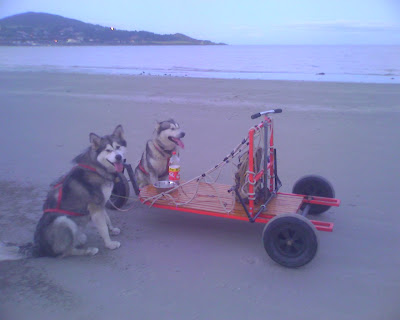 Kodi & Buck with their sled on Dollymount Strand
Kodi & Buck with their sled on Dollymount Strand
Conor’s brother Páraic wrote on his Blog
http://quiz.eblana.eu “He was passionate about many things - his family, singing, painting, writing - but he was especially fond of his dogs. He surprised many people around the Northside of Dublin as he sped past aboard his three-wheeled sled, pulled by his harnessed Alaskan malamutes.” Well Conor’s parents must have had a gift of prophecy as his name is derived from the Irish name “Conchobar.” The meaning of the name "Conor" is that of "lover of wolves", or "Hound-lover" and he always had a love of and kept dogs particularly the Alaskan Malamute, a lovely big husky type dog as he said himself “Since first reading Jack London's "The Call of the Wild" when I was 10 or 11 years old, I've been fascinated by everything outdoor and dog related.”
http://ironmountainmalamutes.blogspot.comOne of Conor & Frances’s happiest memories was the trip they made to Finish Lapland for his 50th Birthday where they stayed in an Ice Hotel and went on sleigh drives with dog teams through the snow.
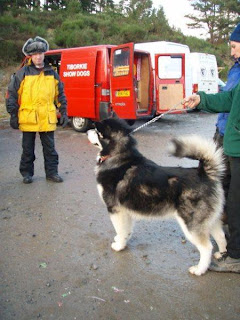 Tiborne Snow Dogs, Scotland
Tiborne Snow Dogs, ScotlandHe also wrote about nature and wildlife and this is a piece called "The Young Hawk" which he often recited at the traditional music sessions in North County Dublin (Fingal) in Oldtown and Ballyboughal. Some of the traditional musicians would support him softly during the recitation and when he finished they would raise the volume and continue with the tune.
The Young Hawk. (Words to be spoken to the air of ‘Inisheer’) Conor MaguireOnce, on Mullaghmore headland
Where the sea-pinks grew
White horses dashed on golden sand
And my thoughts turned, again, to you.
The wind whispered gently through the trees,
A promise of the rain to come.
A young hawk hovered on the breeze,
Heart a-beating like a drum.....
And when he struck to take his kill,
He fell from Heaven like a stone,
Then disappeared across the hill
And I was left there all alone.
You left me too that day
And I still recall the tears.
When there was nothing left to say
You fled back home to Inis Oir.
My days pass quietly now.
Yon boat drifts slowly into night
And like the sailor on her bow
Returning would be my delight.©Frances Maguire MMIXConor was a great lover of Irish music and he and I were regulars at the sessions and in the campaign to keep the oldest Guildhall in Dublin, Tailor’s Hall, open as a traditional music venue. This was a special place with a turf fire in the basement, a skillet on the fire and traditional musicians from all over America, Brittany and famous Irish musicians such as The Furey Brothers and Pete St. John gathering informally for wonderful and genuine music sessions. Our great buddy Liam Weldon who hosted the sessions had a saying that “there is a great difference people who sing traditional songs and traditional musicians.”
See also;http://daithaic.blogspot.com/2010/09/liam-weldon.htmlConor was a traditional musician who felt what he sang and his love of life was reflected in his love of poetry, nature, carving, and painting and above all his love of song. As somebody who couldn’t hold a tune to save my life I was always in awe of his ability to lead a room in song. This is one of the songs he wrote, the inspiration was the camping spot in Knocksink Woods where he and Frances would go to chill out, enjoy nature and the scent of wood smoke. He always bought Frances yellow roses because they have a better scent and last much longer than the mass produced red roses which are grown in sanitised greenhouses with no perfume and flood the market for Valentines Day each year.
Forever MineIf I gave you yellow roses
And we shared a glass of wine
If I told you that I loved you
Would you say that you would stay
Forever mine?
There’s a wood out in the mountains
It’s a place where we could go
We could live our lives together
Just you and me, so peacefully,
No one would know.
Scented pine logs on the fire
Heather dancing on the breeze,
Songbirds sing in upland meadows
And as we kissed, the swirling mist,
Bejewelled the trees.
So I gave you yellow roses
And we shared a glass of wine
When I told you that I loved you
I heard you say, that you would stay
Forever mine.©Frances Maguire MMIX 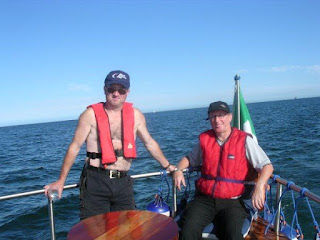 At sea on "Roshane"
At sea on "Roshane"As I mentioned his association with 5th Port Sea Scouts and the nautical skills he picked up left Conor with a lifelong love of the sea. A few years ago he bought a boat, a small “Fifey”, a wooden clinker built boat which was a smaller version of the herring boats originally constructed by William Fife & Co. in Scotland. It has good sea keeping qualities from its trawler like hull with a central console cabin over the diesel engine and small fore and aft cabin and a pump out “head” down below. In this most modest of nautical contraptions he made a number of costal trips and gaining confidence went to the Isle of Man and to Holyhead in Wales. The ship was proudly christened “Roshane” after their children and was initially and conveniently moored at Grand Canal Dock and then at the Poolbeg Yacht Club in Dublin Harbour where Conor & Frances were active members. Then in flotilla they went on some major expeditions such as to the Brest Maritime Festival in France.
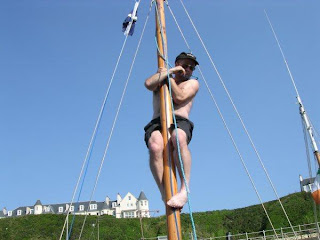 Conor on the mast of "Roshane"
Conor on the mast of "Roshane"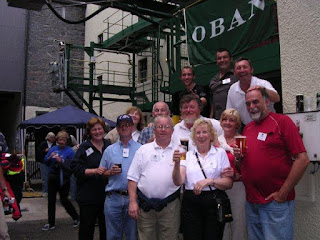 The crew in Oban
The crew in ObanHowever his favourite was the trip they made to the Western Isles of Scotland to Oban and Islay. Once, Argyll and the Isles were along with Ulster part of the Gaelic Kingdom of Dalriada. After the English conquest of Ireland the Scottish part of Dalriada was separate from Scotland as the Gaelic speaking “Lordship of the Isles” (Triath nan Eilean) of mixed Gaelic / Norse rule only being incorporated into the Kingdom of Scotland in 1493. Conor was something of a connoisseur of Scotch whisky and I can still remember his sheer joy at telling me of being able to smell the peat from the distillery kilns 20 miles offshore from Islay and his subsequent tasting tour of the single malt distilleries in the island.
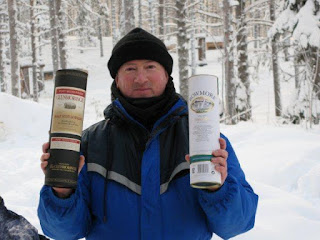 Scotch with ice?
Scotch with ice?My last face to face conversation with Conor (neither of us were to know) was a few weeks before he died in our “local” in Dublin was about the tumble down cabin they had bought as a weekend retreat for his retirement on 8 acres half way up the “Iron Mountain” in Co. Leitrim. Guarding the Southeastern shores of Lough Allen, 585m-high Slieve Anierin is one of the best known summits in Leitrim. The peak is commonly known by its Irish name, Sliabh An Iarainn, which translates as 'the iron mountain' and provides a clue to the role the hill has played in recent history. An ancient Irish legend relates that the Tuatha De Dannan (The pre-Celtic druidic people in Ireland, literally “The People of Magic”) landed in Ireland in this very place. According to the legend they descended in a thick mist and on discovering iron, forged metal weapons. With their superior armour, they then set to battle and defeated the Formorian tribe at the battle of Magh Tuireadh. It is a beautiful area where walkers stand in awe at the breathtaking panoramic views over the West and Midlands of Ireland, or wonder at the amount and variety of flora and fauna encountered; foxes, hares, rabbits, badgers, raven and Peregrine Falcons. Also tellingly for Conor, on the other side it looks over the Lakeland’s of Fermanagh and the ancestral lands of the Maguire’s. Conor had intended to reforest all eight acres of the land in native timber.
 Iron Mountain, Co. Leitrim
Iron Mountain, Co. LeitrimSome journeys are the hardest to make and some words are the hardest to write. We laid our friend to rest in Dardistown cemetery about 400 yards beyond the take off threshold on the runway at Dublin Airport. Conor and I shared a disrespectful sense of humour and I can almost hear him say “If there is a plane crash there will be bodies everywhere!” Indeed over many years and ups and downs we were almost the proof that people are friends despite knowing each other. He has a fitting plain headstone of Wicklow granite from the beautiful county south of Dublin which he and Frances loved but I cannot bring myself to say it is what Conor would have wanted for he loved life, Frances, Roisín, Shane, people, music and the land of Ireland too much to want to leave. At his funeral we said goodbye but none of us were there, after such a life, to mourn Conor Maguire. Rather than mourn a life which had ended instead we gathered to celebrate a life which had been completed, albeit far too soon.
 Conor & Frances (and a Troll) in my flat, Dublin, 1985
Conor & Frances (and a Troll) in my flat, Dublin, 1985 At Conor's funeral for the first time in many years I met his boyhood friend Gerard Cowan who was living in America and who had been battling a brain tumour for nearly 10 years. While he was very obviously not himself he was still delighted to catch up with the old gang. I told him that Conor would have really appreciated he was there and he just said "Conor would have done the same for me." There was a lot of decency about Gerard and we felt for him in his fight against his illness. It is odd and unsettling that the two West Finglas friends who grew up two doors apart on Kildonan Avenue have gone from us in such a short time as Gerard died two months afterwards in February 2009. I penned a short appreciation
http://daithaic.blogspot.com/2009/02/gerard-cowan.html and was hugely humbled and touched to receive this note from his 11 year old son, Ben;
“Thanks for writing this about my dad. It's nice to hear about when he was young and see the weird pictures. I love the outdoors and nature as much as he did. Mom, my sisters, and I miss him a lot, but Mom says he's with Conor having a great time now.”I sure Ben’s mum is right and wherever Conor is he is taking off his hat and leading the sing song. Ben’s sentiments brought to mind the poem “The Prophet” by the Lebanese poet Khalil Gibran;
“Then Almitra spoke, saying, "We would ask now of Death."
And he said: You would know the secret of death. But how shall you find it unless you seek it in the heart of life? The owl whose night-bound eyes are blind unto the day cannot unveil the mystery of light. If you would indeed behold the spirit of death, open your heart wide unto the body of life.
For life and death are one, even as the river and the sea are one. In the depth of your hopes and desires lies your silent knowledge of the beyond; And like seeds dreaming beneath the snow your heart dreams of spring. Trust the dreams, for in them is hidden the gate to eternity.
Your fear of death is but the trembling of the shepherd when he stands before the king whose hand is to be laid upon him in honour. Is the shepherd not joyful beneath his trembling, that he shall wear the mark of the king? Yet is he not more mindful of his trembling?
For what is it to die but to stand naked in the wind and to melt into the sun? And what is to cease breathing, but to free the breath from its restless tides, that it may rise and expand and seek God unencumbered? Only when you drink from the river of silence shall you indeed sing.
And when you have reached the mountain top, then you shall begin to climb. And when the earth shall claim your limbs, then shall you truly dance.”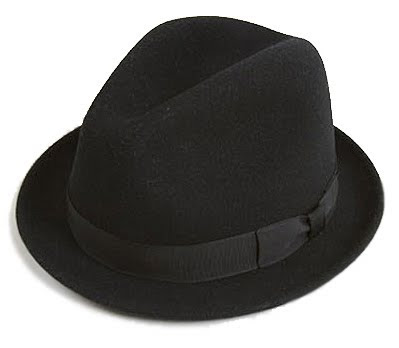 Conor Maguire15th November 1956 – 27th November 2008“Gone Home”
Conor Maguire15th November 1956 – 27th November 2008“Gone Home”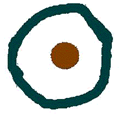 See also,
See also,
Gerard Cowan;
http://daithaic.blogspot.com/2009/02/gerard-cowan.htmlBallymun Scouts
http://daithaic.blogspot.com/2010/11/ballymun-scouts.html
